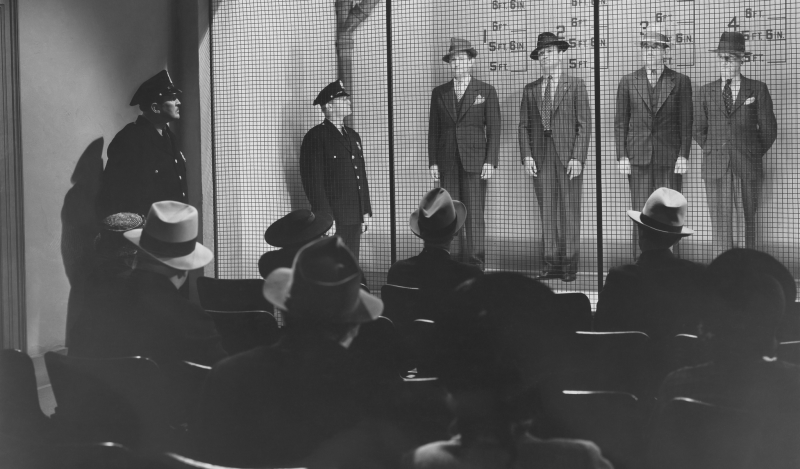ON January 23, 2020, the day that the Chinese authorities sent their dramatic message to the world by putting the sprawling mid-China city of Wuhan under lockdown, the Biotech company Moderna signed a $1 million funding agreement with the Coalition for Epidemic Preparedness Innovations (CEPI) to deliver a vaccine that would go into human clinical trials within 16 weeks.
Serious efforts had been under way at the World Health Organisation (WHO) to declare SARS-CoV-2 a public health emergency of international concern (PHEIC) in the run-up to this Covid-19 vaccine announcement. But the WHO Emergency Committee, convened on January 22 by Director General Tedros Adhanom Ghebreyesus, had declined to cooperate.
The WHO committee’s demurral presented a problem for CEPI’s chief executive officer Dr Richard Hatchett, who was at the World Economic Forum (WEF) in Davos in mid-negotiation with Moderna. The vaccine, which was jointly owned by the US National Institute for Allergy and Infectious Diseases (NIAID), had been designed on January 13, the day Chinese authorities announced the first death from Covid pneumonia in Wuhan.
In the UK, in parallel with efforts to persuade the WHO to declare a PHEIC, a government-sanctioned ‘Precautionary Sage meeting on Wuhan Coronavirus’ took place the same day, January 22, in advanceof the first coronavirus Cobra meeting scheduled for January 24. The Sage meeting was co-chaired by Sir Patrick Vallance, the Chief Scientific Officer, and Chris Whitty, the Chief Medical Officer. Also participating by telephone from Davos was Dr Jeremy Farrar, Director of the Wellcome Trust and co-founder of CEPI.
The minutes of that Sage meeting were made public only after a disclosure request by the legal team challenging via judicial review the legality of the UK lockdown. The Johnson government put the country under house arrest on March 23, 2020 following a lobbying campaign directed at his special adviser Dominic Cummings, who eventually recommended the lockdown.
There is no mention of the Wuhan lockdown in the Sage minutes, indicating that the meeting took place before the dramatic escalation of events in China on the evening of January 22 when authorities announced its imposition from the stroke of midnight.
Sage’s terms of reference make clear that it is activated by Cobra to provide technical advice to the government in support of Level 2 (serious) and Level 3 (catastrophic) emergencies. Yet this first meeting took place when no emergency officially existed. Its timing demands answers to two questions. Who initiated the activation of Sage? And was it arranged in expectation of a PHEIC being declared by the WHO on that day? A third matter of public interest is what contact was there between Farrar and Whitty or Vallance before the SAGE meeting?
Rishi Sunak, the former Chancellor of the Exchequer, told the Spectator last week that the Sage scientists had been given too much power to decide if the country would lock down or not, giving evidence that the minutes of the Sage meetings had been edited in the run-up to lockdown to suppress contrary opinion.
The minutes for the preliminary meeting do not mention lockdown but they do recommend the Chief Medical Officer, Whitty, should consult behavioural scientists on the proportionality of the Public Health England isolation plan for suspected cases and their contacts, and for advice on how to communicate uncertainty. Furthermore the names of four observers have been redacted from the Sage minutes for the January 22 meeting, which were revised on January 23. The names were omitted altogether from the addendum which includes a statement saying ‘Participants who were Observers and Government Officials were not consistently recorded therefore this may not be a complete list.’
In the absence of a PHEIC, the Wuhan lockdown on January 23 provided the event that CEPI so badly needed to catalyse its vaccine announcement. Might it have been recommended to the Chinese government by an old friend of Sir Jeremy Farrar, Dr George Gao?
CEPI’s Richard Hatchett told the Davos press conference that they were in contact saying, ‘Dr George Gao, the current director of China’s CDC [Center for Disease Control and Prevention] served on CEPI’s scientific advisory committee. We have reached out and are in discussions but those discussions are not as mature as those partnerships I announced today.’
Without a PHEIC, CEPI’s plan to move the Moderna vaccine directly into Phase 1 human trials was in jeopardy on two fronts. In his book Spike Farrar explains, ‘if the globe’s top health agency doesn’t deem an outbreak a global emergency, the world tends to shrug its shoulders. A declaration gets things moving, unlocks funds, galvanises leaders – ultimately it saves lives’.
Another lesson learnt from the 2014 Ebola PHEIC cited in CEPI’s preliminary business plan of 2016 was that the Ebola vaccine trials could have commenced sooner had the WHO declaration been made six months earlier.
Farrar made his own contribution to the efforts to secure a PHEIC declaration. The weekend before Davos, in a breach of protocol by a peer reviewer, he was informed about a paper submitted to The Lancet by researchers from the University of Hong Kong suggesting the new virus could spread between humans and claiming evidence of asymptomatic transmission.
The paper concerned SARS-CoV-2 detected in a family of six who visited Wuhan in early January. Another family member was infected on their return home and a ten-year-old child who tested positive for the virus had no symptoms. This last case could arguably have been interpreted as evidence of immunity against the virus, but wasn’t.
In Davos, Farrar said that people without symptoms who are infected with the virus could possibly spread it before they knew they were sick. Other scientists believe this is a speculation with little or no foundation. Farrar later told the UK Parliament that humans had no immunity to SARS-CoV-2. (In March 2020, CEPI awarded the University of Hong Kong $600,000 to develop a Covid-19 vaccine.)
Farrar provided the information about the Hong Kong study to the WHO ahead of the January 22 Emergency Committee hearing. According to the account in his book, he then strong-armed The Lancet into an early release of the paper.
But although the PHEIC was eventually declared by the WHO on January 31, it didn’t seem to help CEPI’s fundraising for its Covid vaccine programme. Government contributions trickled, rather than gushed, in.On March 6, 2020, on the back of a UK government announcement that it was contributing £20 million to CEPI’s Covid-19 vaccine plan, CEPI issued an urgent funding call, setting a target of $2 billion.
CEPI’s CEO, Dr Hatchett, was already setting out the vaccine as the only way to exit lockdown. He said: ‘It is increasingly clear that containment measures for Covid-19 can only slow down its spread and the virus is now entering a stage of unprecedented threat in terms of its global impact. While we heartily support the range of public health measures that governments are putting in place to protect their populations, it is critical that we also invest in the development of a vaccine that will prevent people from getting sick in the first place.
‘Working as part of the global response, CEPI has committed $100 million of its own funds and moved with unprecedented speed to initiate a programme of vaccine development with the goal of having vaccine candidates in early-stage clinical trials in as little as 16 weeks. However, these funds will be fully allocated by the end of March and without immediate additional financial contributions the vaccine programmes we have begun will not be able to progress and ultimately will not deliver the vaccines that the world needs.’
In a portent of what was to follow around the world, Italy imposed local lockdowns in Padua and Lombardy on February 22, 2020, following the first death attributed to Covid-19 outside China. Ten days after having been admitted to hospital with another medical condition, a 77-year-old man from the small town of Vo’, with no known links to Wuhan, was reported to have died in Padua from, or perhaps ‘with,’ pneumonia said to have been caused by Covid-19.
While Professor Neil Ferguson, a Sage member, and other researchers at Imperial College London were involved in modelling the impact of social distancing measures in February, their researchers were also involved in a key Italian study in Vo’ which claimed 40 per cent of the residents were asymptomatically infected. Although they tested positive, they neither had, nor developed symptoms, perhaps suggesting instead that they had immunity.
As lockdown mania spread, it was game on for CEPI. In June 2020, it signed a $22 million contract with an Italian pharmaceutical glass manufacturer, the Stevanato Group, which by fluke is headquartered in Padua, to produce vials for bottling 2 billion doses of Covid-19 vaccines. The Stevanato Group, which now provides vials to 90 percent of the current Covid vaccine programmes, made its stock market debut in New York last year, raising $453.5 million in capital.
It plans to use the funds to build new two factories, one in the US and one in China. The stock market launch is also a windfall for the Stevanato family who will ‘reduce their holding in the company’ to cash in.
While the lockdowns have been catastrophic for ordinary people, destroying livelihoods, damaging children’s education and fueling the inflationary hurricane that is the cost of living crisis, for CEPI they were mission accomplished. As Cummings recalled in testimony to a Commons committee, the next round of lobbying began immediately: ‘I have got a text from Patrick Vallance, when he texted me directly on, I think, 24 March . . . where he says explicitly, “I want to set up a vaccine taskforce, and do it outside the Department of Health and Social Care.”’ Three days after putting the country under house arrest, the UK government pledged another £210 million for CEPI’s vaccine programme.
Dr Hatchett revealed in Davos on the day of the Moderna press conference that discussions were under way between CEPI and the Chinese. In the next instalment I will examine how their relationship has developed.
Republished from The Conservative Woman
Join the conversation:


Published under a Creative Commons Attribution 4.0 International License
For reprints, please set the canonical link back to the original Brownstone Institute Article and Author.









